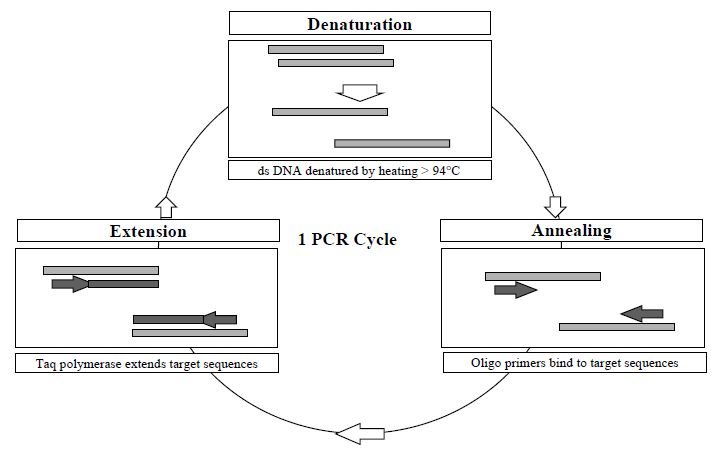

النبات

مواضيع عامة في علم النبات

الجذور - السيقان - الأوراق

النباتات الوعائية واللاوعائية

البذور (مغطاة البذور - عاريات البذور)

الطحالب

النباتات الطبية


الحيوان

مواضيع عامة في علم الحيوان

علم التشريح

التنوع الإحيائي

البايلوجيا الخلوية


الأحياء المجهرية

البكتيريا

الفطريات

الطفيليات

الفايروسات


علم الأمراض

الاورام

الامراض الوراثية

الامراض المناعية

الامراض المدارية

اضطرابات الدورة الدموية

مواضيع عامة في علم الامراض

الحشرات


التقانة الإحيائية

مواضيع عامة في التقانة الإحيائية


التقنية الحيوية المكروبية

التقنية الحيوية والميكروبات

الفعاليات الحيوية

وراثة الاحياء المجهرية

تصنيف الاحياء المجهرية

الاحياء المجهرية في الطبيعة

أيض الاجهاد

التقنية الحيوية والبيئة

التقنية الحيوية والطب

التقنية الحيوية والزراعة

التقنية الحيوية والصناعة

التقنية الحيوية والطاقة

البحار والطحالب الصغيرة

عزل البروتين

هندسة الجينات


التقنية الحياتية النانوية

مفاهيم التقنية الحيوية النانوية

التراكيب النانوية والمجاهر المستخدمة في رؤيتها

تصنيع وتخليق المواد النانوية

تطبيقات التقنية النانوية والحيوية النانوية

الرقائق والمتحسسات الحيوية

المصفوفات المجهرية وحاسوب الدنا

اللقاحات

البيئة والتلوث


علم الأجنة

اعضاء التكاثر وتشكل الاعراس

الاخصاب

التشطر

العصيبة وتشكل الجسيدات

تشكل اللواحق الجنينية

تكون المعيدة وظهور الطبقات الجنينية

مقدمة لعلم الاجنة


الأحياء الجزيئي

مواضيع عامة في الاحياء الجزيئي


علم وظائف الأعضاء


الغدد

مواضيع عامة في الغدد

الغدد الصم و هرموناتها

الجسم تحت السريري

الغدة النخامية

الغدة الكظرية

الغدة التناسلية

الغدة الدرقية والجار الدرقية

الغدة البنكرياسية

الغدة الصنوبرية

مواضيع عامة في علم وظائف الاعضاء

الخلية الحيوانية

الجهاز العصبي

أعضاء الحس

الجهاز العضلي

السوائل الجسمية

الجهاز الدوري والليمف

الجهاز التنفسي

الجهاز الهضمي

الجهاز البولي


المضادات الميكروبية

مواضيع عامة في المضادات الميكروبية

مضادات البكتيريا

مضادات الفطريات

مضادات الطفيليات

مضادات الفايروسات

علم الخلية

الوراثة

الأحياء العامة

المناعة

التحليلات المرضية

الكيمياء الحيوية

مواضيع متنوعة أخرى

الانزيمات
Steps in the PCR
المؤلف:
John M Walker and Ralph Rapley
المصدر:
Molecular Biology and Biotechnology 5th Edition
الجزء والصفحة:
18-11-2020
3184
Steps in the PCR
The PCR consists of three well-defined times and temperatures termed steps: (i) denaturation at high temperature, (ii) annealing of primer and target DNA and (iii) extension in the presence of a thermostable DNA polymerase.A single round of denaturation, annealing and extension is termed a ‘cycle’ (Figure ). A typical PCR experiment consists of 30–40 cycles. In the first cycle, the double-stranded ‘high molecular weight’ template DNA is (i) denatured by heating the reaction mix to 95°C. Within the complex mass of DNA strands, the region to be specifically amplified (target) is thus made accessible to the primers. The temperature is then (ii) decreased to between 40 and 60 °C to allow the hybridisation of the two oligonucleotide primers, which are present in excess, to bind to their complementary sites that flank the target DNA.
The annealed oligonucleotides act as primers for DNA synthesis, since they provide a free 3´-hydroxyl group for DNA polymerase. The DNA synthesis step (iii) is termed extension and carried out at 72 °C by a thermostable DNA polymerase, most commonly Taq DNA polymerase.

Figure : Schematic of one PCR cycle illustrating the three steps: denaturation, annealing and extension.
DNA synthesis proceeds from both of the primers until the new strands have been extended along and beyond the target DNA to be amplified. It is important to note that, since the new strands extend beyond the target DNA, they will contain a region near their 3´ ends which is complementary to the other primer. Hence, if another round of DNA synthesis is allowed to take place, not only the original strands will be used as templates but also the new strands. The products obtained from the new strands will have a precise length, delimited exactly by the two regions complementary to the primers. As the system is taken through successive cycles of denaturation, annealing and extension, all the new strands will act as templates and so there will be an exponential increase in the amount of DNA produced. The net effect is to amplify selectively the target DNA and the primer regions flanking it, leading to the production of millions of effectively identical copies.
For efficient annealing of the primers, the precise temperature at which the annealing occurs is critical and each PCR system has to be defined and optimised by the user. One useful technique for optimisation of annealing temperature is called ‘Touchdown’ PCR, where a programmable thermocycler machine is used to decrease the temperature incrementally until the optimum annealing is reached.Reactions that are not optimised may give rise to other DNA products in addition to the specific target or may not produce any amplified products at all. Another approach to reducing spurious non-specific amplification during the early stages of the reaction is termed ‘Hot Start’ PCR. In this method, the reaction components are heated to the melting temperature before adding the polymerase. At one time Hot Start was achieved by introducing a physical wax barrier between the Taq polymerase and the remainder of the reaction components which melted at the denaturation temperature, allowing the Taq polymerase access to the reaction mix. More recently, modified polymerase enzyme systems have been developed that inhibit polymerisation at ambient temperature, either by the binding ligands such as antibodies or by the presence of bound inhibitors
that dissociate only after a high-temperature activation step is performed.Such modified polymerases are routinely used in PCR.
 الاكثر قراءة في مواضيع عامة في الاحياء الجزيئي
الاكثر قراءة في مواضيع عامة في الاحياء الجزيئي
 اخر الاخبار
اخر الاخبار
اخبار العتبة العباسية المقدسة

الآخبار الصحية















 قسم الشؤون الفكرية يصدر كتاباً يوثق تاريخ السدانة في العتبة العباسية المقدسة
قسم الشؤون الفكرية يصدر كتاباً يوثق تاريخ السدانة في العتبة العباسية المقدسة "المهمة".. إصدار قصصي يوثّق القصص الفائزة في مسابقة فتوى الدفاع المقدسة للقصة القصيرة
"المهمة".. إصدار قصصي يوثّق القصص الفائزة في مسابقة فتوى الدفاع المقدسة للقصة القصيرة (نوافذ).. إصدار أدبي يوثق القصص الفائزة في مسابقة الإمام العسكري (عليه السلام)
(نوافذ).. إصدار أدبي يوثق القصص الفائزة في مسابقة الإمام العسكري (عليه السلام)


















